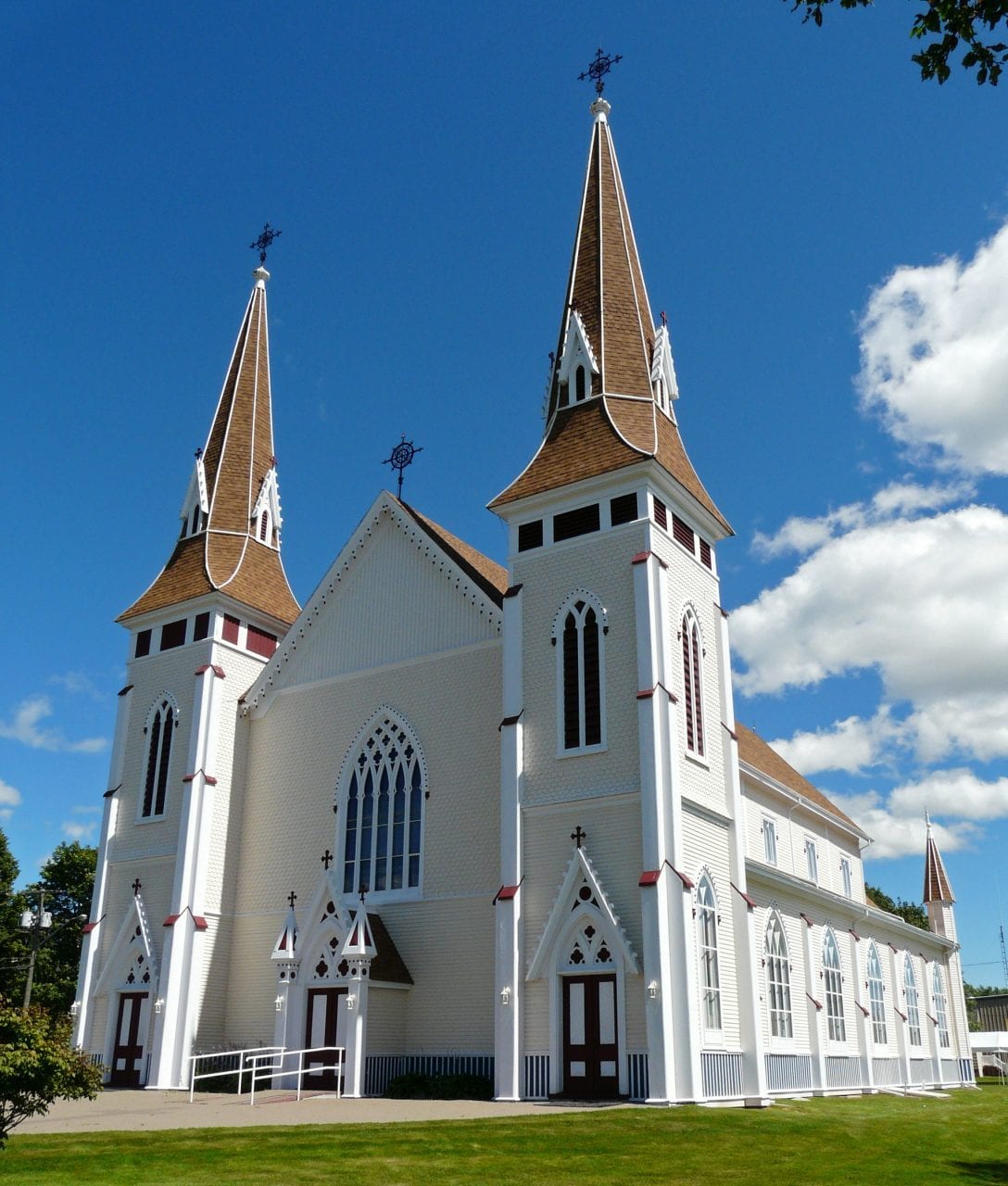The Village of Miscouche

The pretty town of Miscouche, near Summerside, the second largest city in Prince Edward Island, is the gateway to Évangéline, one of the island’s main Acadian regions. Miscouche is home to the Acadian Museum of Prince Edward Island, whose permanent exhibit charts the history of the island’s Acadians from 1720 to today. In addition, every six months, the museum offers a new temporary exhibit dealing with a specific aspect of Acadian culture. An archive centre also enables visitors to carry out genealogical research. Armchair discussions and various other informal activities are held at the museum, which is part of the Prince Edward Island Museum and Heritage Foundation. Don’t miss the magnificent Saint-Jean-Baptiste Church, just a short distance from the museum.
To learn more…
A decisive event at Miscouche
August 15, 1884 is a very important date for Acadians. The second National Acadian Convention was held in Miscouche that day, three years after the convention in Memramcook, New Brunswick, where the delegates chose August 15, dedicated to Notre‑Dame‑de‑l’Assomption, to celebrate National Acadian Day.
This time, in Miscoucheon the afternoon of August 15, 1884, Abbé Marcel-François Richard made an impassioned plea for the adoption of his design for an Acadian flag. Following his highly eloquent speech, the delegates unanimously adopted the tricoloured French flag, decorated with a gold star in the blue section, the symbolic colour of the Virgin Mary. According to Abbé Richard, the star “must guide the small Acadian colony through storms and pitfalls.” In the evening, he dazzled the Convention’s organizing committee by unfurling the flag that he had already made. The next day, on August 16,1884, the delegates raised the Acadian flag for the first time in front of the church in Miscouche. Since then, the flag has been adopted by all Acadians and can be seen wherever Acadians live.
History of the Acadians of Prince Edward Island
This event is one of the themes that artist Claude Picard depicted in the six large historical paintings that are part of the Acadian Museum’s permanent exhibit. In addition, an award‑winning video and five panels made up of texts, photos and artifacts tell the story of the odyssey of Prince Edward Island’s Acadians. From the pioneers’ settlement on the island in 1720 all the way up to their contemporary struggles to preserve Acadian and Francophone culture, by way of the tragic story of the Deportation and the resettlement of a small number of families on the island, the exhibit highlights the courage and determination of this embattled people.
The situation today
Today, approximately one quarter of Prince Edward Island’s residents claim to have Acadian ancestors. Most of the people who carry on the French tradition send their children to one of the province’s six French‑language schools. Because they had to endure so much hardship, many Acadian descendants no longer speak French, while nonetheless remaining proud of their roots.
In 1964, the Association of the Acadian Museum was created to give a concrete expression to the Acadian presence on Prince Edward Island and the desire of the members of this community to have their specific characteristics and traditions officially recognized. The Acadian Museum thus adopted a two-fold mission: to showcase the history of the Acadian community on the island and to promote learning about its history. It achieves this mission by acquiring and preserving collections used to interpret the Acadian historical and cultural heritage of Prince Edward Island. The current museum opened in 1992.
Open year-round, the Acadian Museum of Prince Edward Island is a tourist attraction that is visited mainly during the summer. In the winter, it serves more as a community gathering place where events are held. The exhibits and video are in both official languages, and visitors are greeted in both French and English. The bilingual armchair discussions in the summer (one week in French, one week in English) are intended for Francophones, Anglophones who want to learn more about Acadian culture, and Acadians who no longer speak French but who are still attached to their traditions.
After 300 years of surviving against the odds, the Acadian men and women of Prince Edward Island have every reason to be proud of their accomplishments and to be confident in their future. The Acadian Museum of Prince Edward Island showcases their fascinating odyssey.





